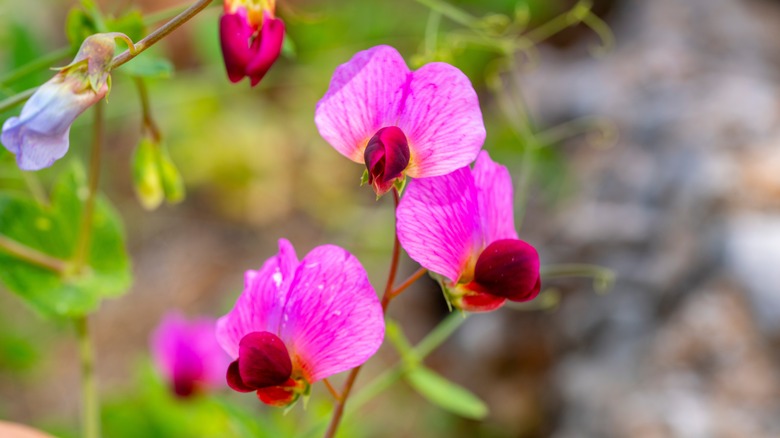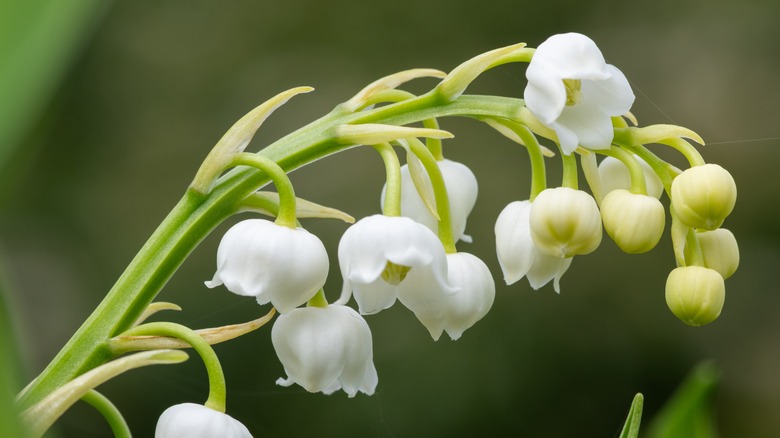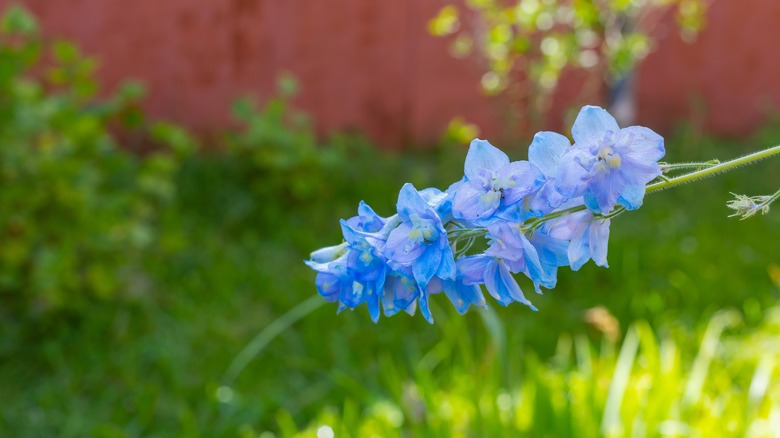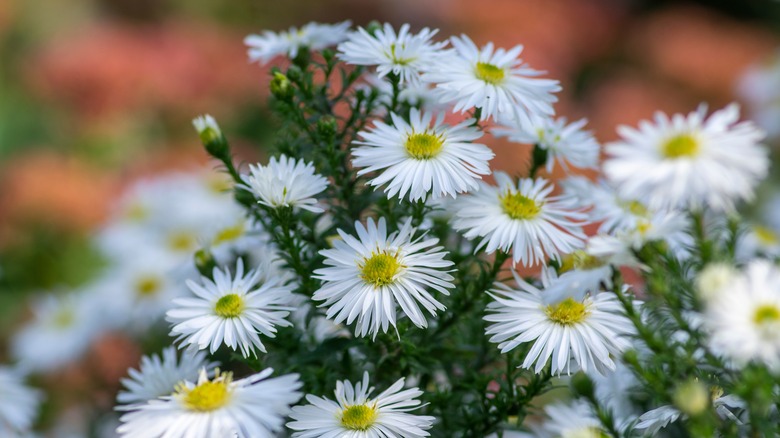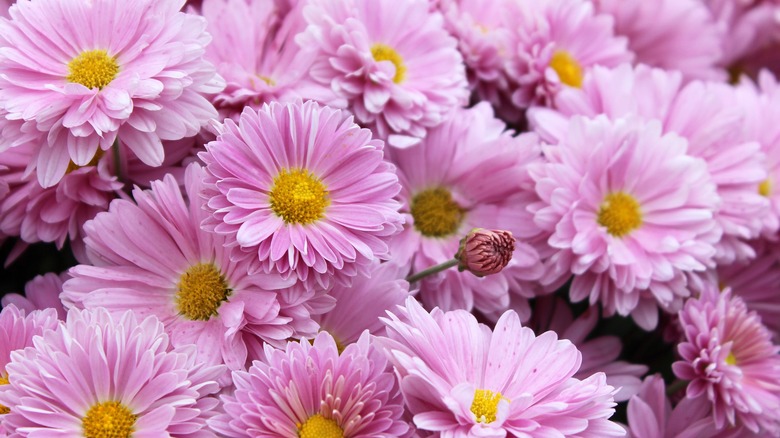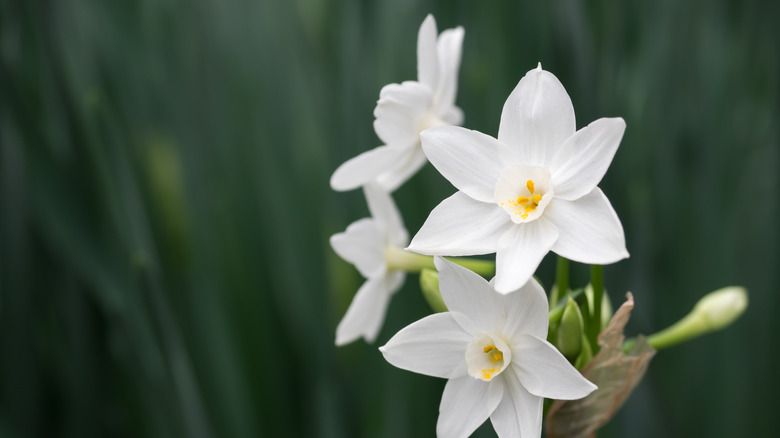Birth Month Flowers To Plant And Grow In Your Garden
There seems to be a flower for every occasion. If you want to say, "I am thinking of you," just buy a bouquet of pansies. But if you want to tell someone "I love you," a red rose, of course, will get the job done. There are even flowers that symbolize victory and remembrance. And guess what? Just like birthstones, there are designated flowers for each birth month. Sweet pea is the flower of April-borns. For those born in October, their flower is marigold. And anyone born in November is represented by the chrysanthemum from the daisy family.
Also, there are some birth months with even two or three flowers. Ideas about where these birth month flowers came from range, but the tradition dates back to ancient Rome. Nevertheless, next time you celebrate your birthday with a vintage garden party decor, make sure to ask for your birth month flower. Even better, plant and grow your birth month flower in your garden. After all, gardening is one of the most fulfilling and relaxing hobbies one can have.
January
Carnations (Dianthus caryophyllus) are the flowers for January, which is quite fitting as they prefer cooler temperatures. These blooms symbolize women, love, and fascination. Ancient Greeks even used carnations to make crowns for gods. They have an unforgettable fragrance and ruffled petals on top of silvery blue-gray-green leaves. What makes them even better is that they are grown easily in most average, well-drained soils from USDA Hardiness zones 5 to 9, and don't require too much attention. If the carnation doesn't appeal to you, maybe snowdrop (Galanthus nivalis) will. It is the secondary birth month flower for January.
February
Resilient and rarely fussy about the soil they grow in, violets (Viola odorata) are the flowers for those born in February. Of course their name suggests they all come in shades of purple, but you can also find them in yellow hues. But no matter the color, they are associated with modesty and faithfulness. Pressed violets were found in the locket of Napoleon on his death, taken from his wife Josephine's grave. In the U.S., you can grow them from zones 4 to 9. Just keep them away from full sun. Not a huge fan of this bloom? The secondary birth month flower for February is the Iris.
March
Of all the plants that announce spring's arrival, daffodils (Narcissus spp.) are probably the most well known. They are also the birth month flower of March. These cheery flowers with their pink, white, yellow, and orange petals are a sign of rebirth, happiness, and — obviously — new beginnings, making them fitting for spring. You can grow them in USDA Hardiness zones 3 through 10, and if you want them to flower consistently, make sure they get at least half a day of direct light. The best time to plant these bulbs is in the fall, somewhere between October and December. Sadly, there is no secondary flower for March.
April
People born in April have three choices to pick from: Sweet Pea (Lathyrus odoratus), Daisy (Bellis perennis), and peony (Paeonia sp.). Sweet pea symbolizes pleasure; daisies are the symbols of innocence and purity; and peonies represent the continuity of family. With such a range of meanings, you can choose one that truly resonates with you. But if you are looking for the easiest one to grow, one that thrives reliably for years, go with peonies (zones 3 through 8). Sweet pea, on the other hand, is a cool-season annual, and daisy is hardy in zones 4 through 8 and grown as an annual in the Northern U.S.
May
May's flower is one that says "sweet and humble."Lily of the valley (Convallaria majalis)is hardy in USDA Zones 3 through 7, and it's a low-maintenance flower that thrives in most soil conditions. The only issue is that it doesn't tolerate heat and the plant may reduce its blooms as it ages. Don't worry, though! Dividing is a simple trick that can keep your perennials blooming longer. Just keep in mind that even though it grows slowly, if it finds the right conditions, its dense rhizomes will spread and can even choke out other plants nearby if uncontrolled.
June
Rose and honeysuckle (Lonicera sempervirens) are the birth month flowers of June. Now you might be tempted to pick rose, but if you live in coastal regions with salty soils, honeysuckle is a better bet for the conditions. Both roses and honeysuckle symbolize romance and love, and they each has beautiful flowers. When it comes to hardiness zones, roses thrive in zones 5 through 11, whereas honeysuckles do best in zones 4 through 9. But they are not all perfect. For instance, roses have many diseases and may need significant care, whereas honeysuckle is highly flammable and a fire risk.
July
Even though it has a reputation for being extremely poisonous, larkspur (Delphinium), the birth month flower of July, has a surprisingly positive meaning. It represents a lovely spirit, positive energy, loving connections, as well as youth and playfulness. Maybe because it grows in time to enjoy the carefree days of summer. You can grow it reliably in USDA Zones 3 to 9, but the soil has to be alkaline with a pH above 8. But if you don't like larkspur, the water lily (Nymphaea) is the secondary birth month flower for July, and it grows in the same zones.
August
A classic bloomer in summer — and in fact, one of the most colorful ones –sword lily (Gladiolus) is the birth month flower of August. It is a symbol of victory, honor, and strength. In ancient Rome, gladiators who fought to the death were covered in gladiolus flowers. Nevertheless, you can grow it reliably anywhere in USDA Hardiness zones 7 to 10. However, if you live outside these zones, you might want to go with poppy (Papaver). It is the secondary birth month flower of August, and it grows well in zones 2 through 7. Quite interestingly, poppies symbolize fallen soldiers.
September
The birth month flower for September is Aster (Symphyotrichum spp). It is one of the most colorful of all the flowers in the fall. They grow well in USDA Zones 4 through 8. They represent wisdom, affection, and an all-powerful love. You can plant them in cottage gardens, borders, and containers. They are a wonderful addition to any landscape, and when they bloom, butterflies will come flying to your yard. The best part? They are low maintenance, too. The best time to plant them is in spring, and they prefer moist, well-drained soil and full sun, although part shade works, too.
October
Marigold (Calendula officinalis) is the flower for those were born in October. It is associated with healing and remembrance. They're also super helpful in the garden. Marigolds help repel garden pests through their roots, which release certain chemical compounds that suppress harmful nematodes. And since they are annuals, you don't have to worry about their preferred USDA zones. Just start the seeds a few weeks before the last frost date and move them to the garden once the danger of frost has passed.
November
People born in November should consider themselves lucky because the queen of fall flowers, mums (Chrysanthemum), are their birth month flower. These flowers come in shades of pink, bronze, red, purple, and white and symbolize joy, optimism, longevity, and loyalty. The best part? They are easy to plant and grow in the garden where they will live and continue to bloom for years. You can grow them reliably from zone 5 to zone 9. However, in the southeast, some mums might not come back the following year. Also, they need rich organic soil so make sure to enrich the soil before planting.
December
Just like April, when it comes to December, you have three options to pick your birth month flower: Paperwhite (Narcissus), poinsettia (Euphorbia pulcherrima), and holly (Ilex aquifolium). Paper white is hardy in USDA Zones 4 through 8; holly is hardy in zones 7 through 9; and poinsettia thrives only in warm zones 9 through 11. And when it comes to each of their meanings, holly is a sign of happiness. Poinsettia is seen as a symbol of purity, and paperwhite stands for immense happiness. Choose the one that resonates with you the most.




